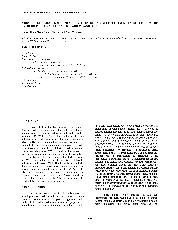摘要
Direct electron transfer between Cytochrome c (Cyt.c) and electrode can be achieved through immobilizing Cyt.c on the surface of multi-walled carbon nanotubes (MWNTs). Under the condition of cyclic potential scans, Cyt.c can be adsorbed on the surface of MWNTs that were modified on a glassy carbon (GC) electrode to form an approximate monolayer. The redox characteristic and bioactivity of Cyt.c could be remained after it was adsorbed on MWNTs' surface. This provides a way to construct a new biosenser based on the activity of Cyt.c. Further investigation displayed that Cyt.c adsorbed on MWNTs showed an enzyme-like activity to catalyze the reduction of nitric oxide (NO). Due to catalyzing by Cyt.c, the reduction of NO in aqueous solution was achieved, which reductive potential appeared at -0.747V (vs. SCE). The peak currents were linearly proportional to concentration of NO in the range from 2 to 48 mu mol/l with a limit of detection of 1.3 mu M. The biosensor showed a good stability and excellent repeatability.
- 出版日期2005-9-1
- 单位安徽师范大学
